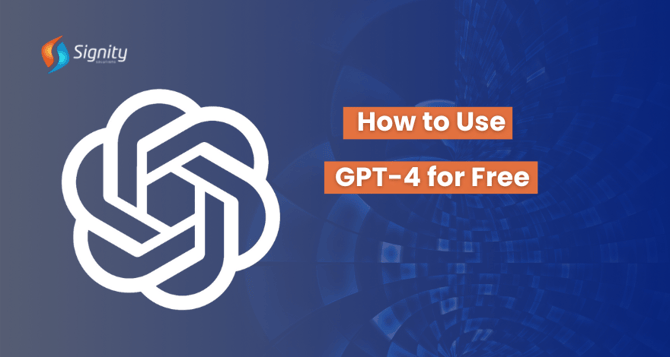How to Use GPT-4 for Free?
Learn to utilize GPT-4 without cost! This guide provides insights on accessing and leveraging the powerful language model for free, enabling users to explore its capabilities without financial commitment.

GPT-4, the latest iteration of OpenAI's Generative Pre-trained Transformer model, represents a significant advancement in natural language processing and AI capabilities. While accessing GPT-4 typically requires a subscription or payment, there are alternative methods available for using this powerful model for free. In this guide, we'll explore various ways to access and utilize GPT-4 without incurring any costs, empowering users to leverage its capabilities for a wide range of applications.
Accessing GPT-4 for Free
1. OpenAI's Playground:
OpenAI offers a web-based playground that allows users to interact with GPT models in a browser environment. While the playground may not provide access to the full capabilities of GPT-4, it offers a glimpse into the model's capabilities and can be used for experimentation and exploration.
2. Community Models:
The AI community often trains and fine-tunes GPT models on public datasets and releases them for free use. Platforms like Hugging Face's Model Hub or GitHub repositories may contain pre-trained GPT-4 models that users can download and use without cost.
3. Self-hosted Solutions:
Advanced users can opt to set up their own GPT-4 models using open-source frameworks such as Hugging Face's Transformers library or OpenAI's GPT codebase. By training the model on their own hardware using publicly available data, users can avoid subscription fees while gaining full control over the model's deployment and usage.
Technical Implementation
1. Using OpenAI's Playground:
- Visit the OpenAI Playground website in your browser.
- Select the GPT model you want to interact with (e.g. GPT-4).
- Enter text prompts or questions in the provided input field and observe the model's responses in real time.
2. Community Models:
- Browse platforms like Hugging Face's Model Hub or GitHub for pre-trained GPT-4 models.
- Download the model files and integrate them into your projects using libraries like Hugging Face's Transformers or TensorFlow.
3. Self-hosted Solutions:
- Set up an AI development environment with Python and the necessary dependencies (e.g., TensorFlow, PyTorch).
- Clone the GPT codebase from OpenAI's GitHub repository.
- Train the GPT-4 model using publicly available data or fine-tune pre-trained models on specific tasks or domains.
Considerations and Best Practices
Legal and Ethical Compliance:
Ensure compliance with OpenAI's usage policies and licensing agreements when using GPT-4 models obtained from community sources or self-hosted solutions.
Resource Requirements:
Running GPT-4 models, especially self-hosted ones, may require significant computational resources and storage capacity. Plan accordingly and consider cost implications for cloud-based deployments.
Model Performance:
Community models and self-hosted solutions may not offer the same level of performance or reliability as official OpenAI models. Conduct thorough testing and validation to assess model quality and suitability for your needs.
Conclusion
While accessing GPT-4 for free may require some technical expertise and trade-offs in performance and reliability, it remains an accessible option for users seeking to leverage its advanced natural language processing capabilities without incurring subscription costs.
Smart Solutions, Smarter Business!
Contact our team to explore tailored AI solutions that can boost your business growth.
By exploring alternative methods such as OpenAI's Playground, community models, and self-hosted solutions, users can unlock the potential of GPT-4 for a wide range of applications, from creative writing and content generation to problem-solving and automation, all without breaking the bank.


%201-1.webp)


.png?width=344&height=101&name=Mask%20group%20(5).png)







.png?width=352&name=microsofts-recall-feature%20(30).png)
-1.png?width=352&name=microsofts-recall-feature%20(1)-1.png)








